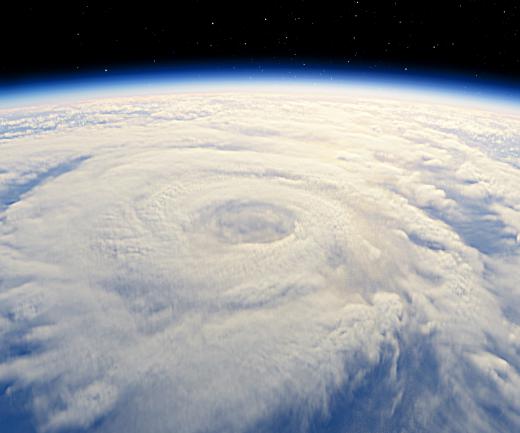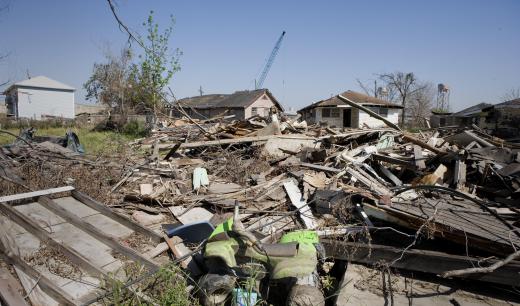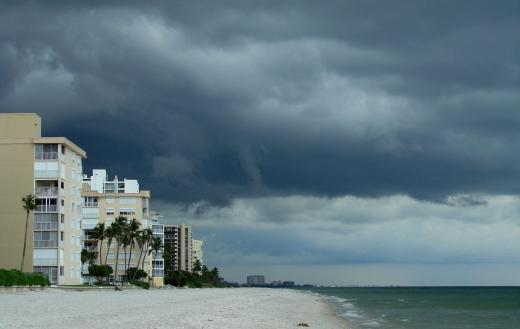What is a Tropical Cyclone?
A tropical cyclone is a type of weather system that moves across warm oceans and often brings rain, wind, and high surf to shoreline communities. The size of a tropical cyclone can vary from 120 miles (193.1 km) to 1,200 miles (1,931.2 km) in diameter. This is a low pressure system, which means as it travels the weather that accompanies it will be more than likely be cloudy and rainy.
Tropical cyclones spin in different directions depending on what hemisphere they are in; in the northern hemisphere, they spin in a counter-clockwise direction. As it moves over warm ocean water, a cyclone gathers energy and heat from the water below. All of the evaporation of moisture from the sea basically makes the cyclone more powerful, fueling it like an engine. This energy, combined with spiraling wind near the ocean surface, help the cyclone to grow stronger and continue on its path.

One type of tropical cyclone is a tropical depression, which has wind speeds that do not exceed 38 miles per hour (61 kph). If the wind speed increases, and winds flow from 39 mph (62.7 kph) to 73 mph (117.5 kph), the cyclone is then referred to as a tropical storm. Officially, a tropical cyclone takes place when a system has winds of at least 74 mph (119 kph).
In the Western North Pacific ocean, a tropical cyclone is referred to as a typhoon. In the Eastern North Pacific and the North Atlantic oceans, a tropical cyclone of the same strength is referred to as a hurricane.

The center of a tropical cyclone is referred to as an eye. Air in the center, or eye, of a cyclone is warmer than the surrounding air that is part of the cyclone. An eye-wall is the area surrounding the eye, and is made up of thick clouds. This is the area where the most activity happens, and meteorologists pay close attention to this part of a cyclone when monitoring its movements.
Tropical cyclones typically last no longer than one week in length. Their strength declines as they travel over cold water, as well as when they have to travel over land masses.

Tropical cyclones are associated with heavy rainfall and strong winds. The high level of rainfall that occurs often leads to a risk of flooding. For those who live near coastal areas, particularly low lying coastal areas, the high surf that is created by the wind from a cyclone can be a major risk. This is referred to as storm surge, and is one of the leading causes of casualties and damage by tropical cyclones.
AS FEATURED ON:
AS FEATURED ON:














Discuss this Article
Post your comments